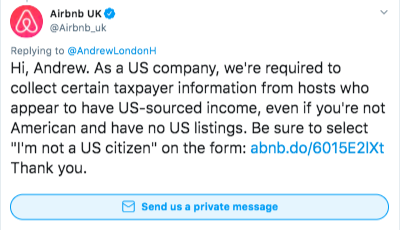Handling customer support on social media: A 10-point guide for brands
- Last Updated : August 17, 2023
- 4.1K Views
- 8 Min Read

Marketing and customer support may look like distant relatives standing at the opposite corners of a family reunion, but social media is here to prove you wrong. The last decade has shown a steady climb in the number of brands that have utilized social networking platforms, not only for brand marketing but also for dedicated customer support.
Even in the midst of traditional channels like support emails, live chats, and FAQs, social media sits above all others. But why? Well, the short answer is that it’s quick and easy. However, it’s a little more than that, which is what we are going to explore in this blog today.
Given how public social channels are for brands, things like their reputation, responsiveness, and audience sentiment can be judged with just a glance through a business’s Twitter feed or Facebook Page. So what’s a social media marketer to do when people are in a hurry to bombard your social channel with everything from technical queries to unflattering reviews—and blatantly ignore any other dedicated support channel?
Here’s a statistic that explains this behavior a little – a Gartner report found that over 70% of social media users reach out to brands on social media, so there is really no escape from this. You can’t choose to ignore customer questions or turn a blind eye to social media complaints—it is intertwined with brand growth in our current social media-obsessed business environment.
That is why we’ve compiled these ten strategies to help you navigate this minefield—a run-through of some of the best practices you can adopt if you’ve got support queries flooding your social media channels dedicated for marketing and building a brand image.
Be where your customers are
We get it. It’s not your dedicated support channel. You’re here to greet your audience with brand updates and build more meaningful interactions with them. But don’t expect customers to care—you’re going to get questions, hollers, DMs, and confused posts on any platform where you have a presence. Wherever your audience is, so are their needs. Whether you handle it yourself or pass it on to the customer service team, it pays to have a plan ready for all these scenarios on all your channels, not just the ones you want to optimize your presence on!
Simplify the process
Remember the part about handling it yourself or passing it on to customer service? There’s an easy rule here—always try to minimize the latter. If a customer has reached out to you on social media, they’re either expecting answers immediately or it’s escalating. Here’s where you need to role-play as your customer service agent—even if someone is helping you from behind the scenes. Get their details over DM, and then try to minimize asking them to send a million more support mails.
Let’s demonstrate with a quick example by AirbnbUK, who helped resolve a transnational tax query:

And here’s Ryanair showing us how not to handle a specific customer query.

Offer quick resolutions
A prompt response goes a long way, but it’s also expected of you! Welcome to 2019—your customers are no longer going to let you off the hook if they’ve already hunted down your social channel for an issue. They’re here because they want help quick!
Most people who reach out on social media probably don’t have the patience to pen an email, or aren’t certain if your phone lines are prompt enough to help. If you can’t fix it immediately, address the problem and request them for some time to look into it.
Train your social media managers
This brings us to the next requirement! There are labor costs involved in designating and hiring separate customer-service personnel for social media and is not something that growing brands can usually afford. This is why it makes sense to train your social media managers, to both save resource and empower the existing workforce.
Even otherwise, it makes practical sense for all social media managers to be trained in handling support issues. More often than not, in the pursuit of not making a mistake, brands can end up sending out tweets or replies that make them sound like robots, or too technical. Don’t do that.
Stick to your brand’s tone, but remain polite and open-minded to the complaint. Add a personal touch. We may be a little biased, but here’s how we at Zoho Social handle customer queries that come in through our outreach-focused Twitter channel:

So you’ve fixed the bug, or dispatched the pending shipment, or sorted the payment issue or whatever it is that was requested of you by the customer—great, but don’t forget to let them know of that. Customer support on social media can’t come full-cycle if you don’t reach out to your audience to let them know when an issue has been sorted out.
Because social media is not just a customer service desk to issue tickets, but a networking channel and the one way to build trust and gain a wider audience is by keeping users in the loop and reaching out to them promptly when there’s an update on their question, or when an issue is sorted.
Split the wheat from the chaff
Social media is public, so weeding out the junk is important. And part of that is learning the difference between trolls and social media followers with genuine complaints. You can handle this by either choosing to ignore inflammatory posts, offer support if needed, or block them, as long as you’re sure the person is indeed a troll.
Generally speaking, you can tell someone is a troll if:
a. They have no intention of getting the issue resolved, even after you’ve reached out to help. This requires you to sit down and try to understand the issue of the user, even if they’re berating your brand for everyone to see. But if a user on social media is slandering you without taking into account any of your efforts at damage control, either don’t engage with them or block them, if they’re violating the network guidelines by being offensive or spammy.
b. They’re attempting to instigate fights. A quick check of their profile will show if they have a history of trolling brands. We happen to have a whole guide to help you understand how social media trolls work, and how to handle them effectively.
Split your accounts
This is a necessary step for any brand that’s grown large enough to have a constant influx of queries coming in on social media. If you have a lot of followers and sufficient resources to handle customer service on social media, try to separate it from your main account.
Example: AirbnbHelp and SpotifyCares both are dedicated channels for answering support issues, not just because they handle high user traffic but also because the nature of their service tends to trigger a lot of questions in the form of support tweets. This way you can keep your main handle free of constant customer issues, and focus on the marketing front.
Turn customer queries into marketing/sales opportunities
We’re going to tell you right off the bat—this is not going to be easy. Figuring out the right conversation to turn into a marketing pitch, and doing it deftly, is important. You definitely don’t want to come off like an automated lead-gen bot, or worse, ignore or fail to prioritize the issue at hand. This can cause a poor user experience, and social media is not the place to risk that!
Here’s an example of Samsung doing it subtly. One of their brand tweets got a pricing query which could’ve easily been passed over to sales or taken over in the form of a Q&A over DM—but instead, Samsung responded with a link to their pre-booking page, encouraging the user to check it, and increasing their chances of a sale.

Draw business input from customer interactions
If you’ve identified trends in the issues people are bringing up, make it a point to publish them as charts or infographics, or pin them to your profile. These all end up creating resources that people can use and will reduce your complaint numbers, as well as reflect on you as a proactive brand willing to work and develop on the feedback you receive.

Here’s a look at how Spotify does this. Even when users are taking to their social media channels to point out problems, their willingness to take notes and build on those flaws or errors is what sets them apart as a brand.
Take extra care when dealing with customer data
When handling customer issues on social media, brands will encounter sensitive information that should be dealt with carefully. In light of recent data-protection regulations like GDPR, storing the personal data of customers without their consent can lead to a legal quagmire for any brands in breach of these regulations. It’s advisable to always request that the user DM or privately send their contact information, and only request this information if absolutely necessary. Take a look at how Amazon’s Twitter support channel handles this.

Making social listening part of your routine
Now you know how, when and why to handle customer crises on social media, but this should also include identifying and capturing customer complaints that don’t necessarily always come your way. The internet is a vast place, and people don’t always direct their frustrations at you; your followers could be reaching the incorrect channels, or can’t find you at all?
You end up with complaints and questions scattered across the internet with no one to address them. This is why social listening is key. Monitoring your brand name (even misspellings of it), keywords, and hashtags, are important in mining for conversations and issues related to your brand on social media.

If you’re using a social media management tool, you can set up monitoring columns for multiple networks all from one place—making the task a lot simpler.
Customer experience as a concept is slowly snowballing sales, marketing, and customer support into a single business channel for many growing brands—especially on social media. So it’s always advisable for your social media managers to know how to handle a support or sales query, and be trained to handle any social interactions for your brand. It can help you reach your audience better—and that’s the primary goal that sits at the heart of all brands who put themselves out there to engage their audience.
And that’s everything for today! We hope you learned a little something, and if you have any questions or comments, don’t hesitate to let us know below!
 Amruthavarshinii
AmruthavarshiniiChats & writes about anything from social media, culture, to how chai latte isn't a real thing.


